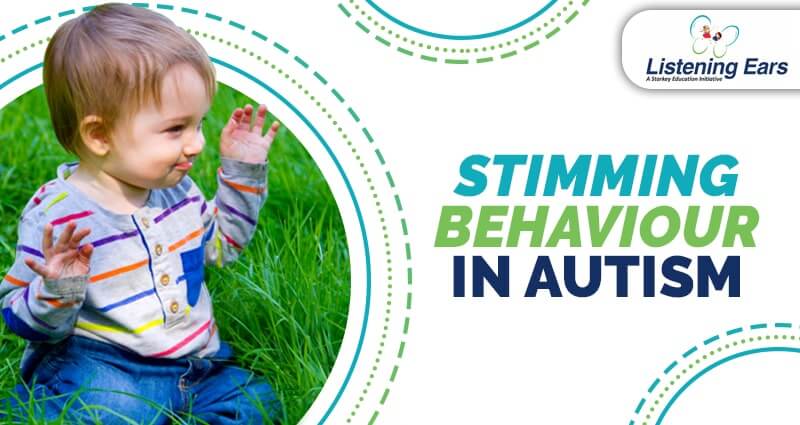Stimming Behavior in Autism

Tips To Talk To Your Children
July 15, 2019
The Right Play and Toy for Every Age
September 30, 2019Stimming is a repetitive body movement such as hand flapping, which is commonly seen in autism and sensory processing disorder. This repetitive movement is also referred to as stereotypy. This behavior can involve any or all of the senses in varying degree in different individuals.
Some people will stim when nervous and exhibit behaviors such as pacing the room, hair twirling, nail biting, tapping feet or fingers, face twitching.
The reasons for stimming is still not fully understood. Some researches suggest that stimming arouses the CNS and provides a pleasure response by release of certain chemicals found in brain called beta-endorphins. Beta endorphins in CNS are responsible for producing dopamine , which is a ‘feel good’ hormone.
Some researches suggest that stimming counteract a lack of sensitivity by stimulating the sensory system. While other suggests that it helps in focusing attention away from overwhelming sensations.
In essence stimming provides comfort to people with autism. This behavior varies in intensity and type and may occur occasionally or constantly.
Types of stimming is divided into various types of senses.
Auditory Stimming
- vocal sounds, such as humming, grunting, or high-pitched shrieking
- tapping on objects or ears, covering and uncovering ears, and finger-snapping
- repetitive speech, such as repeating song lyrics, book sentences, or movie lines
Tactile Stimming
Tactile stimming uses the person’s sense of touch. It may include behaviors such as:
- skin-rubbing or scratching, with the hands or objects
- hand movements, such as opening and closing one’s fists
- finger-tapping
Visual Stimming
Visual stimming uses a person’s sense of sight. It may include repetitive behaviors such as:
- staring or gazing at objects, such as ceiling fans or lights
- repetitive blinking or turning lights on and off
- moving fingers in front of the eyes
- hand-flapping
- eye tracking or peering from the corners of the eyes
- object placement, such as lining up objects
Vestibular Stimming
Vestibular stimming uses a person’s sense of movement and balance. It may include repetitive behaviors such as:
- rocking front to back or side to side
- spinning
- jumping
- pacing
Olfactory or taste stimming
Olfactory and taste stimming use a person’s sense of smell and taste. They may include repetitive behaviors such as:
- sniffing or smelling people or objects
- licking
- tasting objects by placing them in the mouth
Complications of Stimming
While stimming is often not a dangerous behavior, it can have adverse physical, emotional, or social effects on some individuals.
For some, stimming can include higher-risk behaviors such as banging their hands, head, legs, and objects, which may be potentially physically harmful.
At times, this behavior is not stimming but a nonverbal method of communication that a person uses to make themselves understood.
For some children and adults, stimming may interfere with their attention and learning abilities, as well as social interaction with others.
Unfortunately, for those who do not fully understand how people with autism cope with their emotions through stimming, this behavior can be upsetting, distracting, frightening, or dangerous.
Sometimes, this misunderstanding can lead to those with autism becoming socially isolated or restricted from doing what they want to.
Occupational therapy or behavioral therapy help in management or prevention of stimming behaviors.


